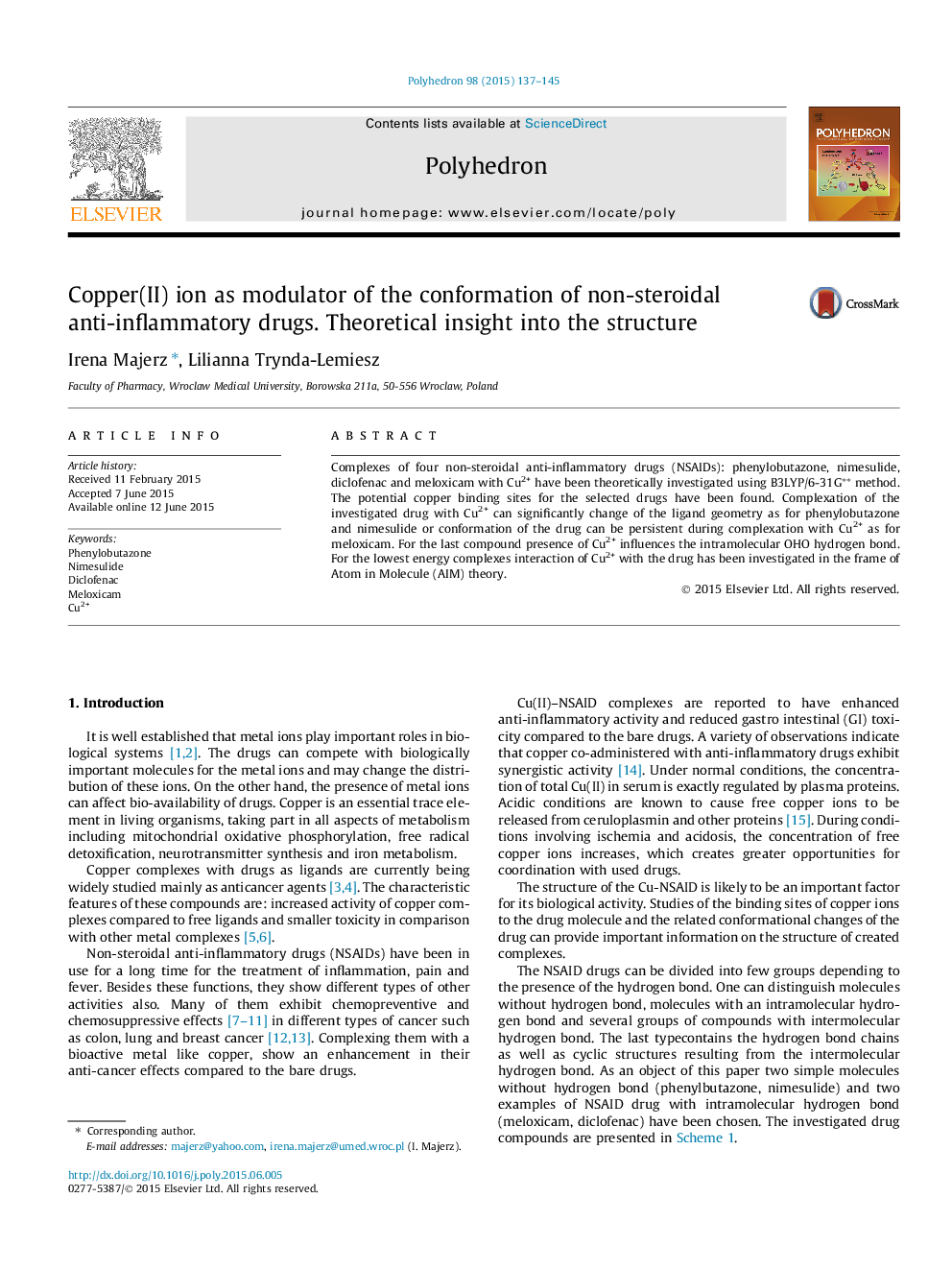| Article ID | Journal | Published Year | Pages | File Type |
|---|---|---|---|---|
| 1334352 | Polyhedron | 2015 | 9 Pages |
Complexes of four non-steroidal anti-inflammatory drugs (NSAIDs): phenylobutazone, nimesulide, diclofenac and meloxicam with Cu2+ have been theoretically investigated using B3LYP/6-31G∗∗ method. The potential copper binding sites for the selected drugs have been found. Complexation of the investigated drug with Cu2+ can significantly change of the ligand geometry as for phenylobutazone and nimesulide or conformation of the drug can be persistent during complexation with Cu2+ as for meloxicam. For the last compound presence of Cu2+ influences the intramolecular OHO hydrogen bond. For the lowest energy complexes interaction of Cu2+ with the drug has been investigated in the frame of Atom in Molecule (AIM) theory.
Graphical abstractWeak interactions between Cu2+ and drug molecule can drastically change the ligand conformation and geometry, which may affect the distribution, metabolism and the action of the drug. The place of interaction of the NSAID drugs with Cu2+ can be the nitrogen atom but also the oxygen or the aromatic ring. Linking of the cation to the drug molecule is realized as a closed ring of interaction so the electrostatic model of interaction is not sufficient to determine the binding place of the Cu2+ cation.Figure optionsDownload full-size imageDownload as PowerPoint slide
